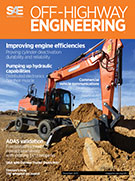Technical Paper
Comparison of Diesel and Natural Gas Bus Performance
2014-09-30
2014-01-2432
Over the years, natural gas has been promoted as a clean-burning fuel, especially for transit buses. A decade ago one could claim that natural gas buses deliver significant emission benefits over diesel buses, especially regarding particulate emissions. The spread in nitrogen oxide emissions has always been significant for natural gas engines, high for lean-burn engines and low for three-way catalyst equipped stoichiometric engines. With the introduction of US 2010 and Euro VI (effective as of 2014) exhaust emission regulations, independent of the fuel, the regulated emissions of all engines have been brought close to zero level. This means that the advantage of natural gas as a clean fuel is diminishing, especially in a situation in which electric transit buses are also entering the market. The motivation to use natural gas could still be diesel fuel substitution and to some extent, also reduction of greenhouse gas emissions.









